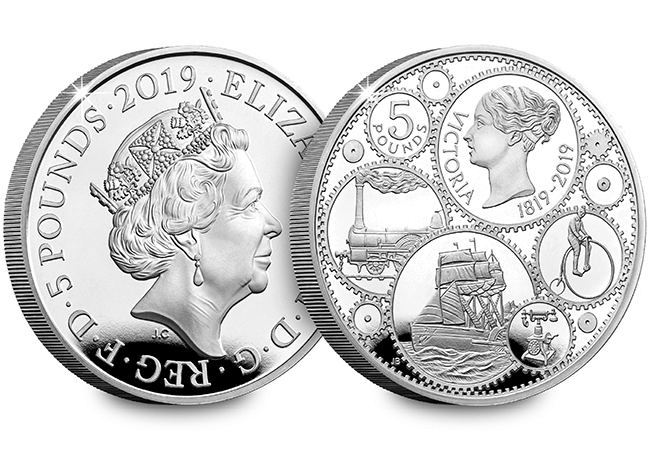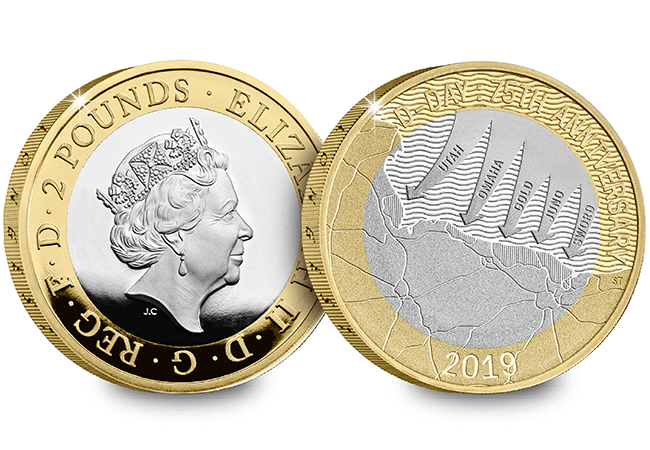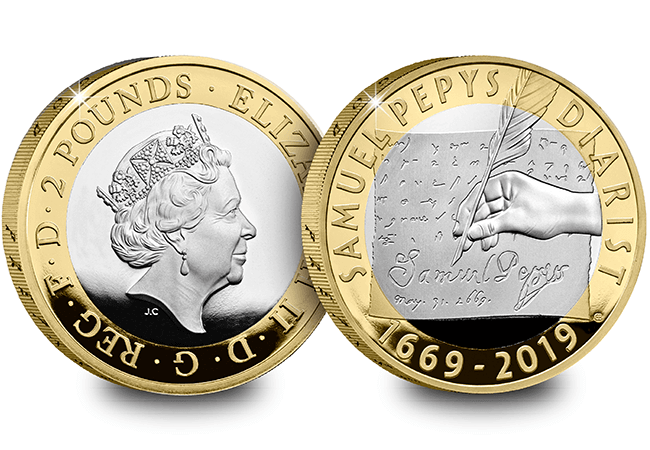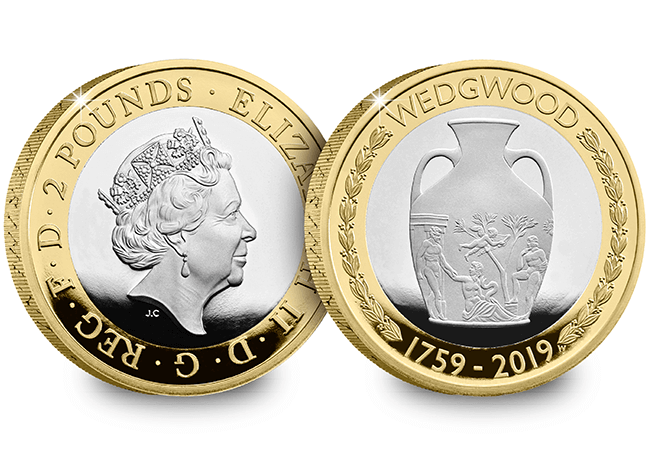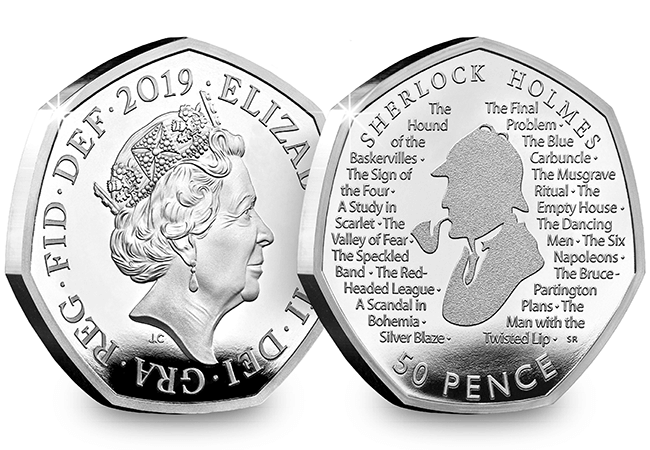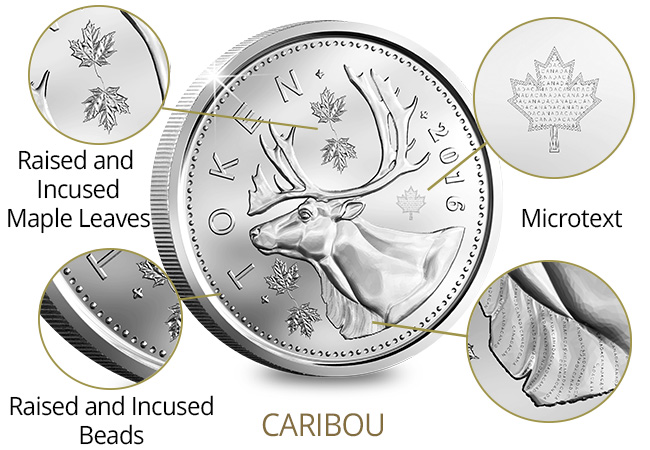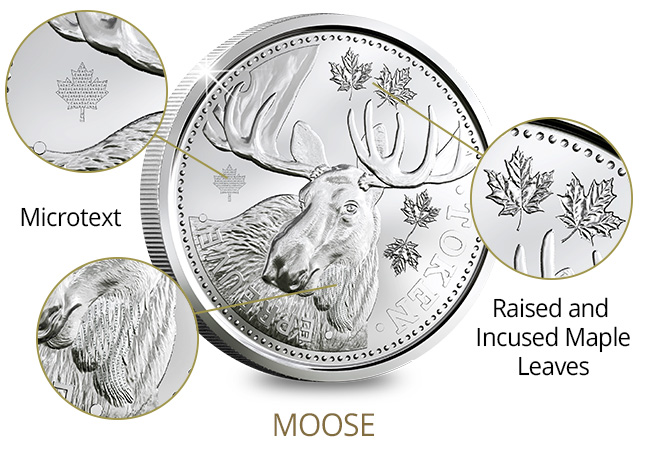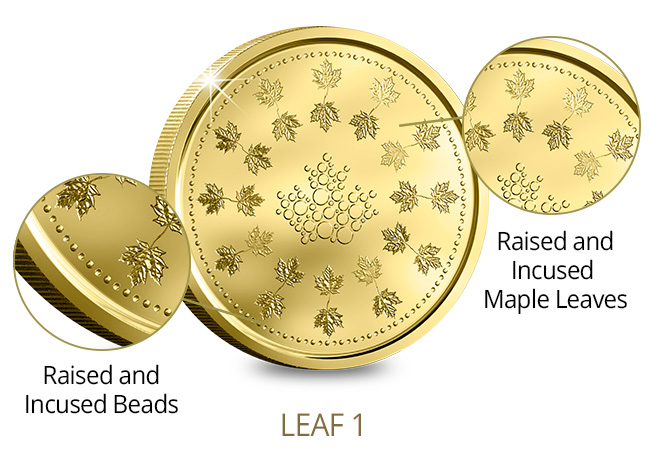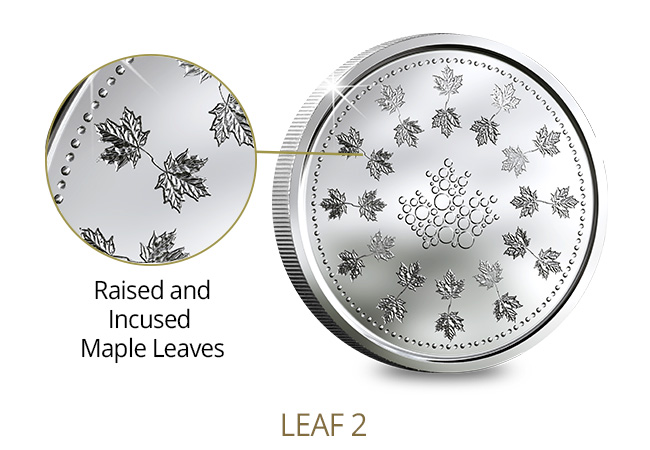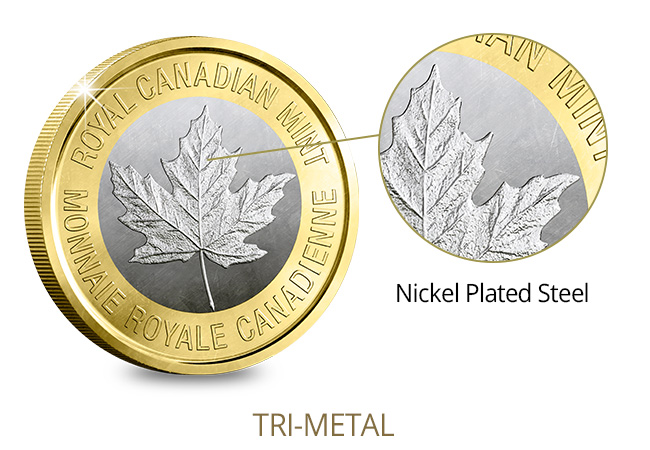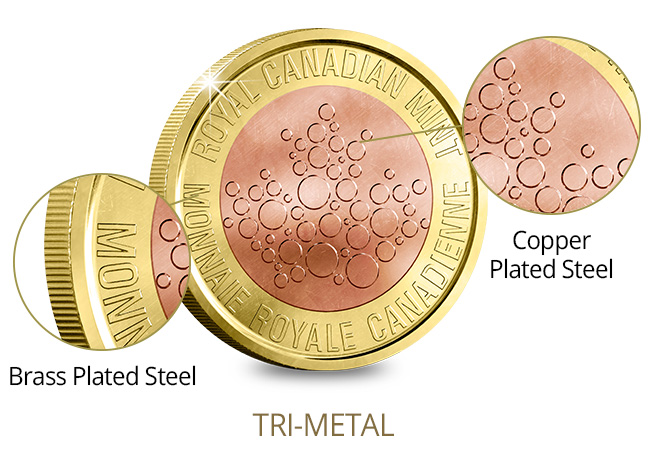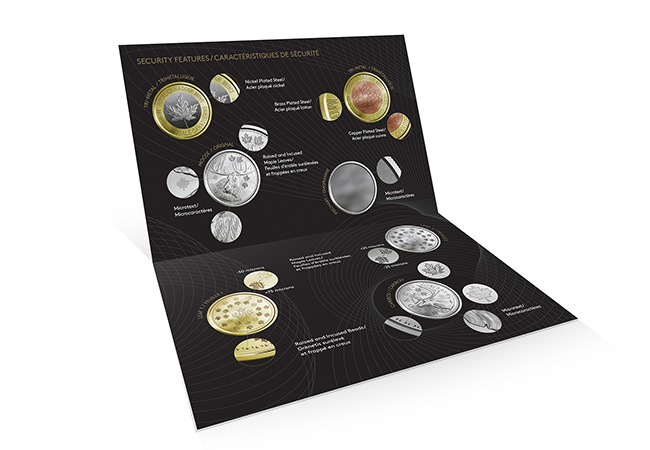Blog Home
First Look: The Royal Mint UK 2019 Commemorative Coins
Each year, The Royal Mint marks important British anniversaries, events or accomplishments on our coins and today we are delighted to reveal the UK’s new coin designs for 2019.
Scroll down for a first look at all five of the brand new designs…
The 200th Anniversary of the Birth of Queen Victoria £5
After ascending to the throne in 1838 Queen Victoria’s reign became the longest reign of a British monarch at the time. She oversaw a time of great change and expansion of the British Empire. This £5 coin has been issued to celebrate the 200th Anniversary of her birth and depicts some of the momentous changes in the British Empire witnessed under her rule, including advances in the industrial revolution due to the power of steam and the invention of the telephone and penny-farthing bicycle.
The 75th Anniversary of the D-Day Landings £2
On 6th June 1944 the largest seaborne invasion in history took place. The operation began the liberation of German occupied France during World War II, and D-Day, as it came to be known, laid the foundations of the Allied victory on the Western Front. This £2 coin has been issued to commemorate the 75th Anniversary of the Normandy Landings and its success which paved the way for the surrender of Nazi Germany. The coin features the 5 beaches codenamed Utah, Omaha, Gold, Juno and Sword, where the invasion took place.
The 350th Anniversary of Samuel Pepys’ Last Diary Entry £2
Samuel Pepys is recognised as the most famous diarist who ever lived, providing valuable first-hand accounts of life in 17th century London and the English Restoration period. His private diary, which he kept from 1660-1669, also provides important eyewitness accounts of landmark events in British history, including the Great Plague of London and the Great Fire of London. This £2 coin has been issued to mark 350 years since Pepys’ last diary entry and features one of his famous diary excerpts written in shorthand.
The 260th Anniversary of the Formation of Wedgwood £2
After Josiah Wedgwood founded the company in 1759, Wedgwood quickly became a pioneer for British pottery, taking it from a craft to an international industry. Largely taking inspiration from ancient cultures and mythologies the company was responsible for creating the ceramic bodies Queen’s Ware (1762), Black Basalt (1768) and Jasper Ware (1774) which remain famous today. This £2 coin has been specially designed by the Wedgwood designers to celebrate 260 years since the establishment of the company.
The 160th Anniversary of the Birth of Sir Arthur Conan Doyle 50p
The prolific writer Sir Arthur Conan Doyle is best known for his incredibly popular detective stories featuring the fictional Sherlock Holmes. It is said his works revolutionised the crime genre, and despite Doyle sharing an ambivalent relationship with his famous character, Holmes appeared in 4 novels and 56 short stories, resulting in Doyle becoming one of the best-paid authors of the time. This 50p coin has been issued to mark 160 years since the renowned author’s birth, and features his iconic character Sherlock Holmes.
All of these designs are stunning and there’s no doubt that these coins will only become more desirable in the years to come.
Let us know in the comments which coin is your favourite!
If you’re interested…
You can secure the brand new 2019 coins in the Brilliant Uncirculated coin pack.
Each coin has been struck to a superior Brilliant Uncirculated finish and is ready to display in an informative presentation pack. This pack features the definitive circulating coins and 5 new commemorative coins issued for 2019.
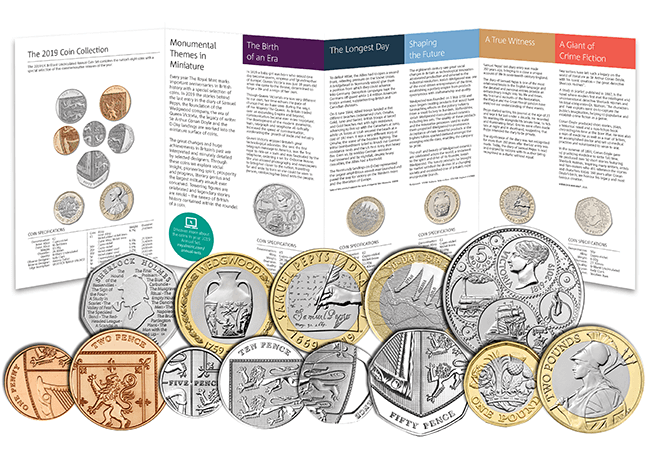
Discover the coins that built the British Empire
The East India Company is living proof of Sir Walter Raleigh’s (1614) prophetic words: “whosoever commands the sea, commands the trade, whosoever commands the trade of the world commands the riches of the world and consequently the world itself,” as they rapidly became a trading force to be reckoned with.
And coins were one of the key ways the company managed trade across the globe.
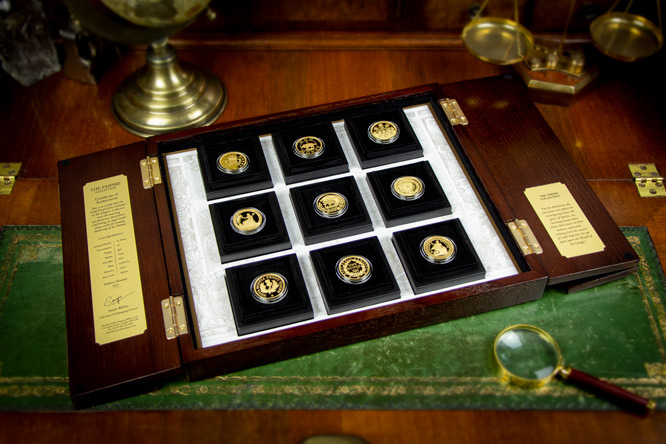
At its peak the EIC was single-handedly responsible for half the world’s trade, including cotton, silk, spices, opium and tea.
Remarkably, the East India Company is still trading today. And they have just authorised a set of limited edition Gold coins paying tribute to the most important coins in their history.
Here is the story behind the coins…
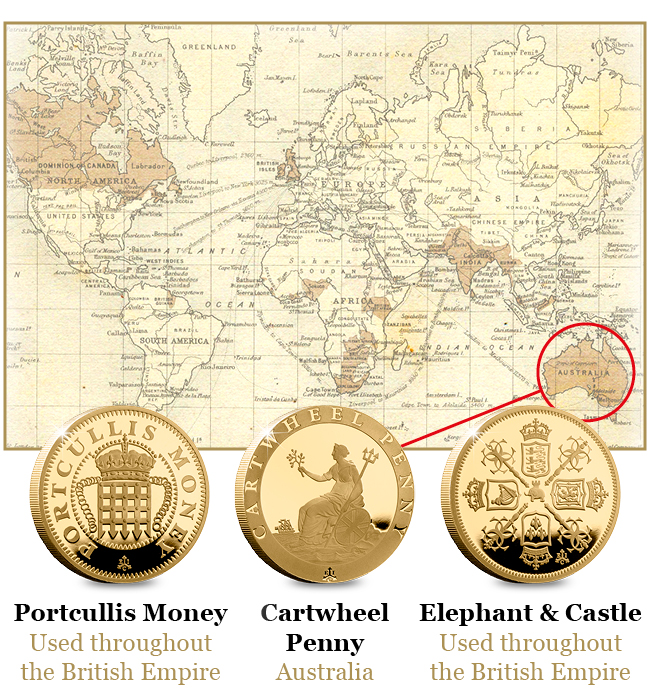
Portcullis Money – 1601 (Throughout the Empire)
Ordered by Queen Elizabeth I to facilitate increased commerce on behalf of the British Crown and to compete against the widely used Spanish Real. These were the first coins issued for the British Empire outside of England’s normal coinage.
The Cartwheel Penny – 1797 (Australia)
The Cartwheel Penny was the first British coin to be exported to Australian Colonies. It was introduced to help curb Britain’s chronic coin shortage which was impacting economic growth. Specially designed to prevent counterfeiting, and the thick rim and inscription led to the pennies being informally named ‘The Cartwheel Penny’.
The Elephant and Castle Guinea – 1663 (Throughout the Empire)
The guinea is regarded as the most successful trade coin, exponentially increasing British and local trade wherever it was introduced. This Guinea was the first British machine-struck coin, and adopted its name from where the gold was mined from.
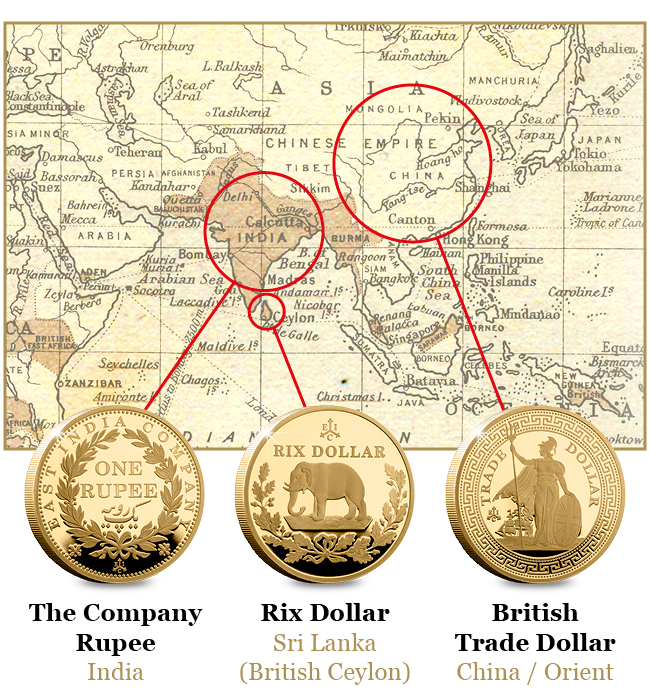
The Company Rupee – 1833 (India)
The Rupee is one of the world’s oldest systems of money. It was adopted by the East India Company upon its arrival in the East, and soon became one of the company’s most important coins and means for trade. In 1833 reforms to the Indian weights and measures led to coinage in India changing from the Sicca to the standard ‘Company Rupee’.
The Rix Dollar – 1821 (Sri Lanka)
Great Britain sought to develop Ceylon’s (Sri Lanka’s) economy and increase trade to and from Europe. As a part of this aim The Rix Dollar was struck specifically for use in Ceylon. Designed by Benedetto Pistrucci, who is also responsible for the now iconic rendition of St. George slaying the Dragon which features on British Sovereigns.
The British Trade Dollar – 1839 (The Orient)
To facilitate the trade of their most lucrative commodities, namely tea and opium a trading post in Canton, China was established. During the Trade Wars Great Britain found itself having to rely more and more on its own silver coinage, and this paved the way for one of the most distinctive silver British coins in numismatic history to be struck: the British Trade Dollar.
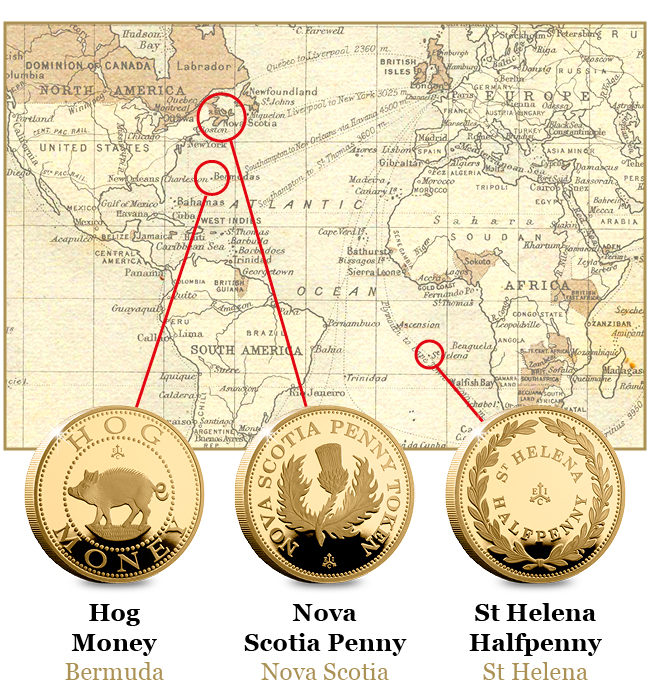
Hog Money – 1609 (Bermuda)
In order to develop Bermuda’s prosperous economy King James I granted permission to mint coins, which resulted in the issuing of Hog Money, inspired by the wild hogs previously introduced to the island, it’s the first English coin to be minted specifically for use in North America.
The St Helena Halfpenny – 1821 (St Helena)
In 1815 St Helena’s economy benefited from the arrival of the former French Emperor, Napoleon, during his second exile, as the famous prisoner brought with him an entourage of British troops, effectively doubling the islands population and prosperity. As the economy swelled, St Helena’s first local coins were introduced.
The Nova Scotia Penny – 1823 (Canada)
Prior to the Canadian Confederation in 1867 many provinces issued their own coinage. However in 1823, without seeking official approval from the Home Office, the province of Nova Scotia ordered the issuing of coins. The coins, issued in denominations of one pennies and halfpennies, contributed to the expansion of local commerce in Nova Scotia.
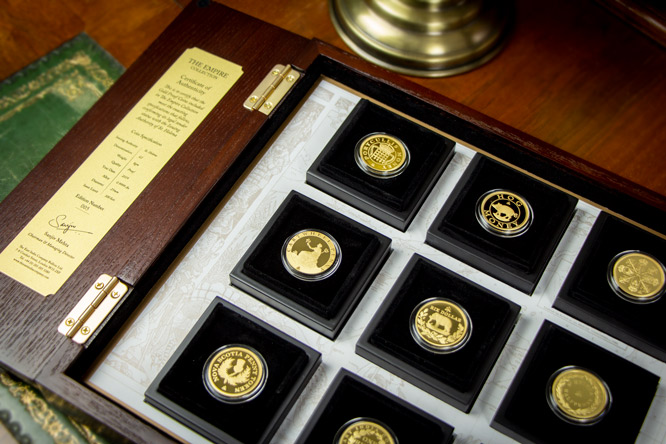
The 2019 Empire Collection
For this exceptional 2019 issue collectors will be taken on a journey to the far flung corners of the world. Retracing the steps of the East India Company, to discover some of the most significant coins which have helped build an empire stretching across three centuries from 1600 to the Victorian Era.
Finished to an exceptionally high standard, the 2019 collection truly represents the global resonance of The East India Company and these significant coins. There is no doubt the 2019 Empire Collection is going to become a future collector priority.
If you are interested…
Out of a Worldwide edition limit of just 100 we have a small stock of the 2019 Empire Collection available. If you are interested in owning a set – please complete the form below and we will contact you directly.
A sneak peek at next generation coinage courtesy of The Royal Canadian Mint
It is always exciting to see new, innovative products coming out of the numismatic industry, and there is nothing quite like the test token set issued by the Royal Canadian Mint’s Research and Development lab. When you see this set it’s no surprise that the Royal Canadian Mint is a market leader in security. Looking to be at the forefront of new minting technologies this latest collection showcases some never before seen minting techniques which are guaranteed to impress both seasoned and budding collectors alike.
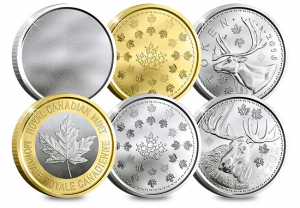
So what exactly is a ‘test token’ I hear you ask? A test token is a prototype of next generation currency, and is created purely to test new technologies and minting techniques before giving the green light to produce future coins with the technology. Since the tokens are test pieces their designs and technologies will not necessarily be replicated in future currency, perhaps only some of the techniques or designs will be taken forward,so the test pieces are one of a kind.
Chief Technology Officer at the Royal Canadian Mint, Dr Xianyao Li, says “the products in our R&D Lab Collection are tried,tested and true examples of forward-thinking technology that could re-define the future of domestic and foreign coins.”
Now we’re suitably intrigued about the new technologies featured in the set, let’s take a closer look at the tokens…
Pie-Chart
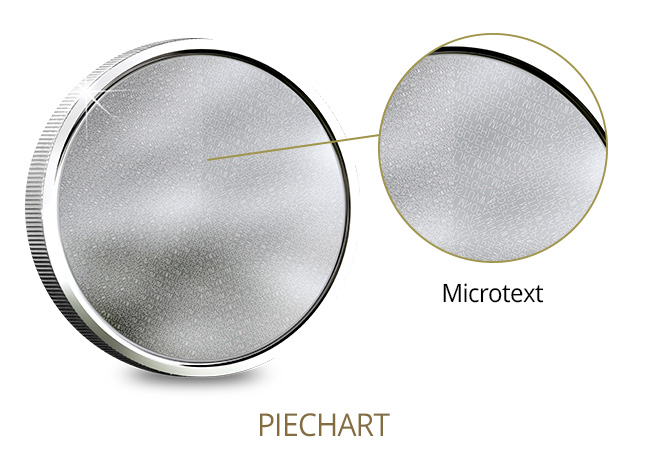
At first glance this perhaps looks to be the most unassuming token of the set, but looks can be deceiving as this token is an example of the advances currently being made in coin production to prevent counterfeiting. If you inspect the surface of the coin closely you will notice it resembles a pie-chart, with the surface subtly split up in to segments which are only just distinguishable. The slices are differentiated by the orientation and size of micro text which varies between segments. Micro text is one of the advancements in minting technology which has emerged in the last few years with the aim of preventing counterfeit coins, as the tiny text is difficult to replicate. Not only is the text extremely difficult to reproduce, it is also virtually indiscernible to the naked eye!
Caribou and Moose
The Caribou and the Moose instantly spring to mind when contemplating iconic Canadian imagery, so it would seem only natural they make an appearance in this set. Each token is crafted from multi-ply plated steel and includes both raised and incused maple leaf designs, instantly creating a noticeably three-dimensional textured surface. The depictions of the creatures on each coin have micro text hidden in their fur as an added security feature, and the maple leaf above the shoulder of each creature is also composed of micro text.
Leaf
The maple leaf is synonymous with Canada and is instantly recognisable as one of its national symbols dating back to the 18th century. Considering this it is unsurprising then that The Royal Canadian Mint also uses this iconic leaf as its logo, creating a strong identity link between country and coinage. Two pieces in the set celebrate the maple leaf with both sides of the tokens featuring raised and incused leaves in a circular pattern with the Royal Canadian Mint’s logo at the centre. The combination of raised and stamped elements create a unique texture on the token which adds an extra layer of security because forgers will struggle to perfectly mimic it in counterfeits.
Tri-metal
The clue is in the title with this one, as it has been produced from a Canadian patented tri-metal compound, consisting of a carefully balanced combination of multi-ply plated steel, brass plated steel, nickel plated steel and copper plated steel. Complex multi-metal compound technology is a security feature to prevent counterfeiting as the exact compound composition is patented and unknown so cannot be easily recreated in a replica.
Own a piece of history in the making
What makes this test token set truly remarkable is the fact that pieces included in the set are the real trial pieces which have been used in calibration and laboratory testing, so each one has been tried and tested making the collection truly unique – no two will be the same!
If you’re interested…
You can now own a piece of numismatic history in the making as we have secured 149 of these unique sets from the Royal Canadian Mint. Be ahead of the curve and add this sneak peek at the next generation of coinage to your collection today!

